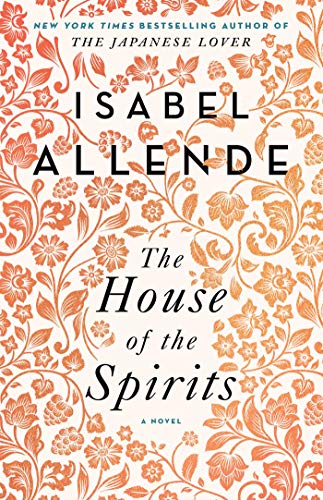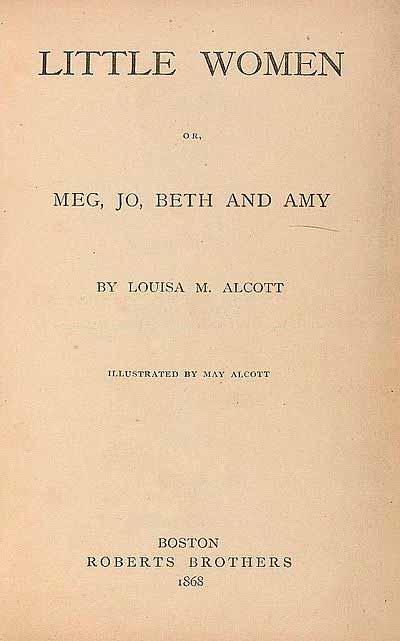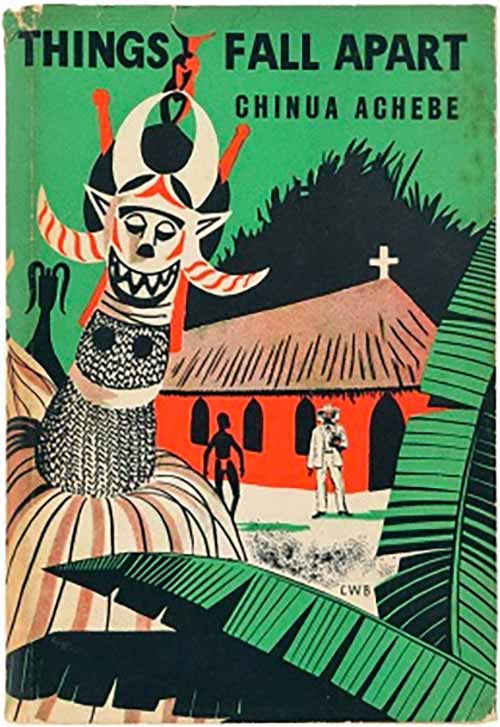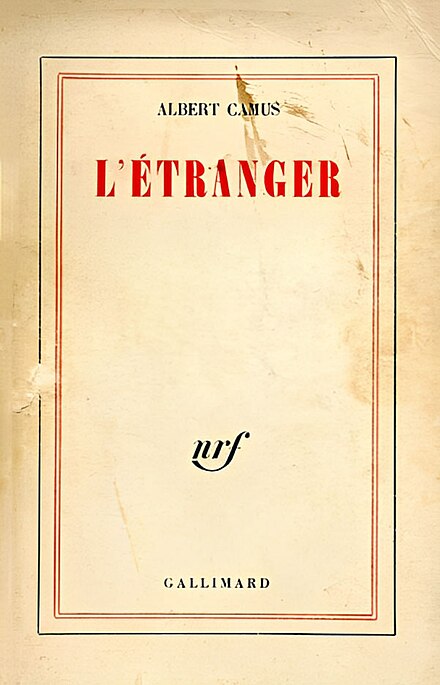Oh, Jane Eyre, how your story has endured the test of time. Written by the beloved Charlotte Brontë, your tale has captured the hearts of readers for over a century. Despite the passing of years, your strength, courage, and independence continue to inspire us all.
Charlotte Brontë’s masterpiece, Jane Eyre, is a magnificent blend of Gothic romance and feminist ideals. This novel has bewitched its readers since its publication in 1847, and it is easy to understand why. The book’s unique blend of a strong female protagonist and challenging societal norms make it a timeless classic.
Charlotte Brontë: The Life and Times
Charlotte Brontë, the author of Jane Eyre, was born in Thornton, West Riding of Yorkshire, England, on April 21, 1816. She was the third of six children born to Maria Branwell and Patrick Brontë, an Irish Anglican clergyman. Charlotte’s mother died when she was only five years old, and her older sisters, Maria and Elizabeth, died while attending school. Charlotte and her sister Emily were then sent to the Clergy Daughters’ School in Lancashire, which inspired Charlotte’s novel, Jane Eyre.
After leaving school, Charlotte worked as a governess and teacher before returning to Haworth, the village where she was born, to care for her father. In 1846, Charlotte, Emily, and Anne published a collection of poems under the pseudonyms Currer, Ellis, and Acton Bell. Later that year, Charlotte published Jane Eyre, which was an immediate success.
Charlotte’s writing was influenced by her own experiences, as well as by her knowledge of literature and politics. She was particularly interested in the works of William Wordsworth, Sir Walter Scott, and Lord Byron, as well as in political issues such as the treatment of the poor and the role of women in society.
Charlotte Brontë: The Life and Times
| Date | Event |
|---|---|
| April 21, 1816 | Charlotte Brontë is born in Thornton, West Riding of Yorkshire, England. |
| 1821 | Charlotte’s mother dies. |
| 1824 | Charlotte and her sisters are sent to the Clergy Daughters’ School in Lancashire. |
| 1831-32 | Charlotte works as a governess in Yorkshire. |
| 1835 | Charlotte returns to the Clergy Daughters’ School as a teacher. |
| 1842-45 | Charlotte works as a governess for the Sidgwick family in London. |
| 1846 | Charlotte, Emily, and Anne publish a collection of poems under the pseudonyms Currer, Ellis, and Acton Bell. Later that year, Charlotte publishes Jane Eyre. |
| 1847 | Emily publishes Wuthering Heights under the name Ellis Bell, and Anne publishes Agnes Grey under the name Acton Bell. |
| 1854 | Charlotte marries Arthur Bell Nicholls, her father’s curate. |
| March 31, 1855 | Charlotte dies during pregnancy at the age of 38. |
Charlotte’s other notable works include The Professor, which was published posthumously, and Villette, which draws on her experiences as a teacher in Brussels.
Charlotte Brontë’s life was short but eventful, and her writing continues to captivate readers around the world. Her legacy as a pioneer of Gothic literature and a writer who explored the lives of women in a male-dominated society lives on, inspiring generations of readers and writers alike.
The Plot of Jane Eyre
Amid the lush landscape of northern England is a tale of a young orphan, Jane Eyre, who finds herself at the center of a tumultuous love affair. Charlotte Brontë’s timeless novel traces the journey of Jane as she navigates her way through a complex web of moral dilemmas, social class, and deep feeling.
Following a tumultuous childhood at a charity school, Jane secures a position as a governess at Thornfield Hall, owned by the mysterious Mr. Rochester. There, Jane and Mr. Rochester fall deeply in love, but their relationship is threatened by secrets that Rochester is hiding. The novel takes a dark turn when the terrible truth is revealed and Jane must flee Thornfield to start her life anew.
Throughout her journey, Jane displays a fierce sense of independence and a strong moral compass, ultimately leading her to reunite with Mr. Rochester and find true love.
Key Plot Points
The plot of Jane Eyre contains several key events and characters that shape the storyline.
| Event | Description |
|---|---|
| Jane’s Childhood | Orphaned at a young age, Jane is sent to live with her cruel aunt and cousins, before being sent to a charity school with harsh living conditions. |
| Jane’s Employment at Thornfield Hall | Jane becomes a governess at the estate of Mr. Rochester, where they fall in love. |
| The Mysterious Fire | A fire breaks out at Thornfield, ultimately revealing Mr. Rochester’s dark secret. |
| Jane’s Departure from Thornfield | After discovering Mr. Rochester’s secret, Jane leaves Thornfield and strikes out on her own. |
| The Reunion at Ferndean Manor | Jane is ultimately reunited with Mr. Rochester at his estate, Ferndean Manor, where they marry. |
Filled with Gothic elements, such as madness, dark secrets, and the supernatural, Jane Eyre is a novel that will transport readers to another time and captivate them with its intricate plot.
The Themes of Jane Eyre
In Charlotte Brontë’s Jane Eyre, several themes are explored, including love, independence, and social class. These themes are interwoven throughout the novel, shaping the characters and the plot.
Love
Love is a central theme in Jane Eyre, as the protagonist struggles to find and understand love. Jane’s early experiences with love are fraught with pain and rejection, from her cruel aunt to her unrequited love for Mr. Rochester. However, she learns to love and be loved in a healthy and mutually beneficial way through her relationship with Rochester. Their love is not without obstacles, but they overcome them and are ultimately able to find happiness together.
Independence
Independence is another recurring theme in Jane Eyre, as the main character seeks to assert her independence in a society that values conformity and obedience. Jane refuses to be constrained by societal norms, and instead follows her own moral compass. Her journey towards independence is not easy, but it is ultimately rewarding, as she is able to live life on her own terms.
Social Class
The theme of social class is prevalent throughout Jane Eyre, as the novel explores the injustices and limitations imposed by social hierarchies. Jane’s lowly status as an orphan is a constant reminder of her place in society, and she is often at the mercy of those with more power and wealth. However, she is determined to rise above her station and assert her worth as a human being, rather than be defined by her social class.
“I am not talking to you now through the medium of custom, conventionalities, nor even of mortal flesh: it is my spirit that addresses your spirit.”
These themes in Jane Eyre continue to resonate with readers today, as they reflect universal human experiences and struggles. Brontë’s exploration of love, independence, and social class in Jane Eyre has left a lasting impact on literature and popular culture, inspiring countless adaptations and interpretations.
The Characters of Jane Eyre
In Charlotte Brontë’s masterpiece, Jane Eyre, the characters are as complex and intriguing as the plot. From the resilient Jane herself to the brooding and mysterious Mr. Rochester, each character adds depth and richness to the story.
Jane Eyre
Jane, the novel’s protagonist, is a strong-willed and independent woman who refuses to conform to the gender roles of her time. She is intelligent, passionate, and fiercely loyal to those she loves. Despite experiencing hardships and injustice, Jane remains true to her values and morals, making her one of the most beloved heroines in literature.
Mr. Rochester
Edward Fairfax Rochester, the enigmatic owner of Thornfield Hall, is a man of contradictions. He is charming and charismatic, but also brooding and mysterious, with a dark past that haunts him. Rochester’s complex personality and tumultuous relationship with Jane make him one of literature’s most memorable romantic figures.
St. John Rivers
St. John is a clergyman whom Jane meets later in the novel. He is cold and reserved, and his strict adherence to duty and ambition make him seem heartless at times. However, St. John’s character also reveals the societal constraints placed on women during the time period, as he tries to mold Jane into a traditional wife rather than accepting her individuality.
“My bride’s mother I had never seen: I understood she was dead. The honeymoon over, I learned my mistake; she was only retired into the convent of the Ursulines, where she passed her life.” -Mr. Rochester
The supporting cast of characters in Jane Eyre is equally intriguing, from the kind and wise housekeeper Mrs. Fairfax to the cruel and manipulative Aunt Reed. Each character plays a significant role in the development of Jane’s story, adding depth and nuance to the novel.
The Setting of Jane Eyre
The setting of a novel often plays a crucial role in establishing its mood and tone. In Jane Eyre, Charlotte Brontë masterfully employs the landscape of northern England to create an atmosphere of brooding tension and mystery. The Gothic elements of the story are perfectly complemented by the rugged beauty of the moors and the imposing Thornfield Hall.
A Land of Contrasts
The moors in Jane Eyre are as much a character as any of the people in the novel. They are wild, untamed, and unpredictable. The moors are a land of sharp contrasts, where the weather can shift from sunny and warm to dark and stormy in an instant. It symbolizes the duality of human nature, and serves as a metaphor for the inner turmoil experienced by Jane and other characters throughout the novel.
| Quote | Page Number |
|---|---|
|
Chapter 11 |
Thornfield Hall
Thornfield Hall is the grand, imposing mansion where much of the action in Jane Eyre takes place. It is a place of both beauty and darkness, where secrets and mysteries abound. The grandeur of the house belies the darkness that lurks within its walls, and Jane’s interactions with the enigmatic Mr. Rochester only heighten the sense of danger and unease.
| “I lingered in the long passage to which this led, separating the front and back rooms of the third storey: narrow, low, and dim, with only one little window at the far end, and looking, with its two rows of small black doors all shut, like a corridor in some Bluebeard’s castle.” |
| Chapter 26 |
The setting of Jane Eyre is not just a backdrop to the action; it is an integral part of the story itself. Its haunting beauty and eerie atmosphere play a crucial role in establishing the novel’s unique tone and style.
Jane Eyre on Film and Stage
Jane Eyre, Charlotte Brontë’s beloved novel, has been adapted for the screen and stage numerous times since its publication in 1847. With its iconic characters, gripping plot, and vivid setting, it’s easy to see why filmmakers and theatre producers have been drawn to Jane’s story for over a century. Let’s take a closer look at some of the most notable adaptations of this timeless classic.
Jane Eyre (1943)
| Director | Robert Stevenson |
|---|---|
| Cast | Orson Welles, Joan Fontaine |
| IMDb Rating | 7.6/10 |
“I have for the first time found what I can truly love—I have found you.” – Edward Rochester, Jane Eyre (1943)
Considered by many to be the definitive film adaptation of Jane Eyre, this 1943 version stars Orson Welles as the brooding Edward Rochester and Joan Fontaine as the passionate and independent Jane. It expertly captures the novel’s Gothic atmosphere and features many memorable scenes, including the famous fire at Thornfield Hall. Its hauntingly beautiful score and stunning black-and-white cinematography earned it four Academy Award nominations.
Jane Eyre (1983)
| Director | Julian Amyes |
|---|---|
| Cast | Zelah Clarke, Timothy Dalton |
| IMDb Rating | 7.6/10 |
“You—you strange—you almost unearthly thing!—I love as my own flesh.” – Edward Rochester, Jane Eyre (1983)
This British TV adaptation of Jane Eyre may not have the same budget or star power as the 1943 film, but it more than makes up for that with its faithfulness to the source material and strong performances. Zelah Clarke’s portrayal of Jane is understated yet compelling, and Timothy Dalton’s Rochester is both complex and alluring. Fans of the novel will appreciate the attention to detail in this version, which includes many of the book’s memorable lines.
Jane Eyre (2011)
| Director | Cary Fukunaga |
|---|---|
| Cast | Mia Wasikowska, Michael Fassbender |
| IMDb Rating | 7.3/10 |
“I wish you all the good I can wish for you. Jane.” – Edward Rochester, Jane Eyre (2011)
This visually stunning adaptation of Jane Eyre features modern sensibilities while staying true to the spirit of the novel. Mia Wasikowska’s Jane is fierce and uncompromising, while Michael Fassbender’s Rochester is both romantic and tortured. The film’s moody and atmospheric cinematography captures the beauty and isolation of the English countryside, and its haunting score adds to the overall sense of foreboding. It’s a worthy addition to the long list of adaptations of this enduring classic.
Jane Eyre’s Literary Legacy
Jane Eyre, perhaps the most famous work of Charlotte Brontë, has left a profound impact on the literary world. The novel has endured through decades and continues to inspire many writers and readers alike even today.
The Feminist Themes of Jane Eyre
The feminist theme of the novel has been widely acknowledged since its publication in 1847. Jane Eyre is a feminist icon who defies societal norms and expectations, pursuing her own path towards personal fulfillment and happiness. The novel’s themes of gender equality and empowerment paved the way for future feminist literature and inspired generations of women.
Gothic Influence on Literature
The Gothic elements in Jane Eyre have also influenced a vast array of literature. The novel’s dark and brooding atmosphere, mysterious characters, and supernatural occurrences have become hallmarks of the Gothic genre. Jane Eyre’s influence on literature can be seen in works like Wuthering Heights by Emily Brontë, and The Picture of Dorian Gray by Oscar Wilde.
Film and Television Adaptations
The popularity of Jane Eyre has led to numerous adaptations for both film and television. From the early silent film era to the present day, the novel has been adapted for the screen countless times. Notable adaptations include the 1943 version starring Orson Welles and Joan Fontaine, and the more recent 2006 BBC miniseries starring Ruth Wilson as Jane.
Contemporary Literature and Pop Culture
Jane Eyre’s influence can also be seen in contemporary literature and pop culture. The novel’s feminist themes and Gothic elements have been reimagined in various forms, from young adult novels to TV shows like Buffy the Vampire Slayer. Jane Eyre’s legacy continues to inspire and shape the world of literature and entertainment.
Charlotte Brontë’s Other Works
Charlotte Brontë is best known for her masterpiece Jane Eyre, but she also wrote several other novels and works during her short life. Here are some of her other notable publications:
| Title | Year Published | Genre |
|---|---|---|
| The Professor | 1857 (posthumous) | Realistic Fiction |
| Shirley | 1849 | Historical Fiction |
| Villette | 1853 | Realistic Fiction |
| Emma | unfinished | Realistic Fiction |
The Professor, Charlotte Brontë’s first novel, was actually written before Jane Eyre but was not published until after her death. It is a realistic depiction of a young man’s struggles as an English professor in Belgium.
Shirley is a historical novel set in northern England during a time of social and economic upheaval. The titular character, Shirley, is a strong-willed young woman who becomes friends with main character Caroline Helstone.
Villette is often considered Charlotte Brontë’s most autobiographical work. It follows the experiences of Lucy Snowe, a young woman who moves to the fictional town of Villette in Belgium to teach English. Like Brontë, Snowe is an independent and introspective woman who struggles with personal loss and societal expectations.
Unfortunately, Charlotte Brontë died at the young age of 38, leaving behind an unfinished novel titled Emma. It is a realistic portrayal of a young woman’s life in Victorian England and was likely inspired by Brontë’s own experiences.
Frequently Asked Questions about Jane Eyre
As a literary classic, Jane Eyre has captured the hearts and imaginations of readers for generations. However, with all great works, there are often questions that arise. Here are some frequently asked questions about Jane Eyre:
What genre does Jane Eyre belong to?
Jane Eyre is primarily a novel of the Gothic genre. This subgenre of Romanticism is characterized by dark themes, supernatural elements, and a sense of foreboding. It also overlaps with other genres, such as the Bildungsroman (or coming-of-age story) and the romance novel.
What is the ending of Jane Eyre?
The ending of Jane Eyre sees our titular heroine reunited with Mr. Rochester, her love interest, after a series of trials and tribulations. They marry and live happily ever after, with Jane noting that their marriage is one of equals, built on mutual respect and love.
What is the significance of the red room in Jane Eyre?
The red room in Jane Eyre serves as a symbol of the oppressive forces that Jane faces in her life. It is a room that holds a traumatic memory for her, where she was once locked up as a child. The oppressive red walls of the room also symbolize the patriarchal system of Victorian England that restricts and confines women.
Is Jane Eyre a feminist novel?
Jane Eyre is often considered a feminist novel due to its portrayal of a strong-willed, independent female protagonist who defies societal expectations and patriarchal norms. Jane is not afraid to speak her mind, pursue her own ambitions, and demand respect from those around her. However, the novel also has elements of anti-feminism, such as the idea that a woman cannot be truly happy without a man by her side.
What is the role of religion in Jane Eyre?
Religion is a recurring theme in Jane Eyre, as the protagonist wrestles with questions of faith and morality throughout the novel. Jane’s religious beliefs are shaped by her upbringing in a strict, Calvinist household, and she often struggles with the tension between her desire for spiritual fulfillment and her passions and desires. The character of St. John also serves as a foil to Jane’s own beliefs, as he represents a rigid, unforgiving version of Christianity.
What is the significance of the moors in Jane Eyre?
The moors in Jane Eyre serve as a symbol of both freedom and danger. They represent the untamed wilderness that exists beyond the confines of civilization and societal norms. For Jane, the moors are a place of freedom and self-discovery, where she can escape the confines of her oppressive life. However, the moors also represent danger and uncertainty, as they are often associated with madness, death, and the supernatural.




